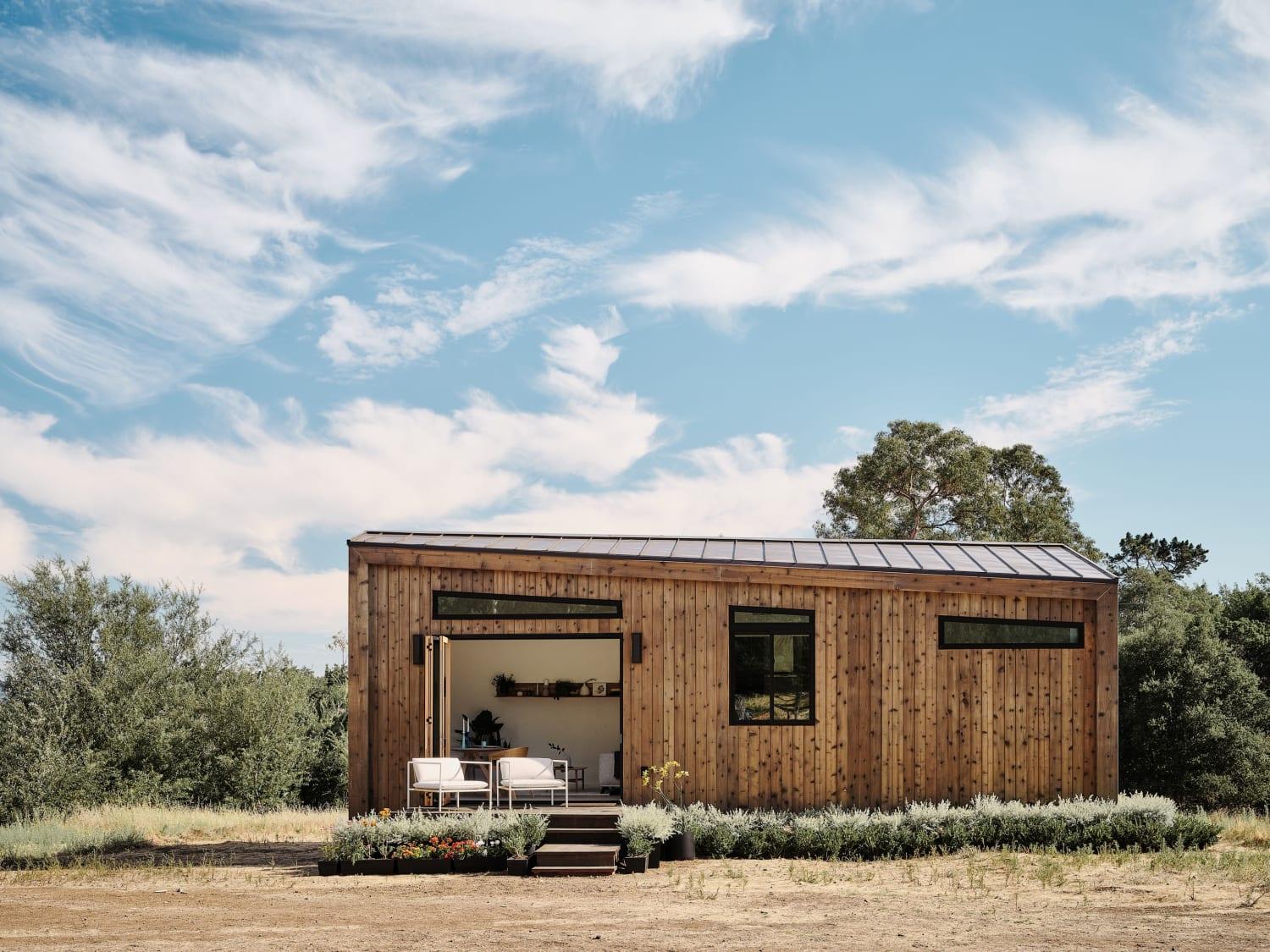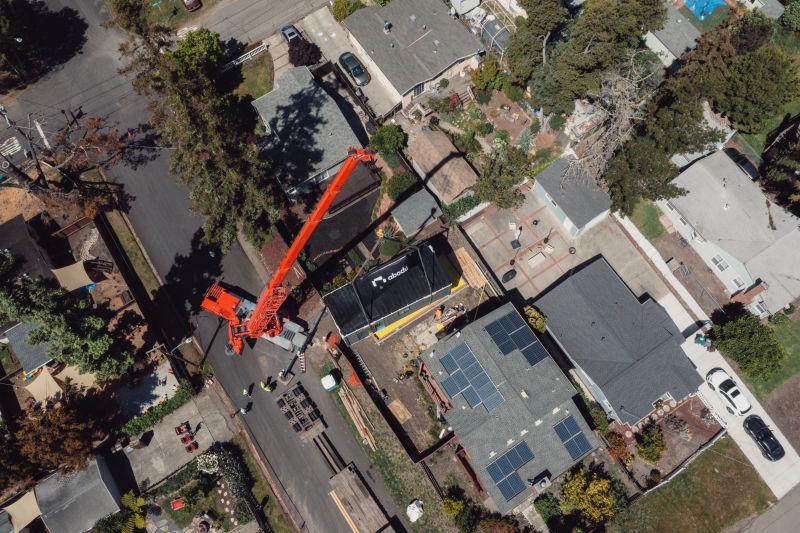How to Get an ADU Permit in California

Abodu in house planning team helps obtain your project's ADU permit for you.
Abodu
Before enjoying the many benefits of ADU ownership, you may have lingering questions about starting your new ADU project, including “What is the cost to build an ADU?” and “Do you need a permit for an ADU?”
Whether you’re using your accessory dwelling unit as a backyard cottage for rent, a private home office, or a granny flat for family members, the initial step is less about construction and more about permission.
From checking zoning codes to submitting a building permit application, the ADU permitting process in California involves multiple phases. Fortunately, by learning the ins and outs of California ADU laws concerning building permits, you can easily set your ADU plans in motion.
What is an ADU permit?
An ADU permit is a formal document issued by a local government that authorizes the construction of an accessory dwelling unit on a residential property. This document confirms that the ADU design and plans meet all the jurisdiction’s building codes, zoning regulations, and safety standards.
Required rooms & amenities
To comply with local ADU ordinances and state law, a standard ADU must have certain rooms and amenities to become a fully functional independent living unit.
This includes a comprehensive kitchen setup, bathroom, sleeping area, and living space. The accessory structure will also need utility connections to water, gas, electricity, and sewer services, though the exact requirements vary by local jurisdiction.
When it comes to junior accessory dwelling units (JADUs), however, building code standards differ slightly. While JADUs are still expected to offer a full kitchen, they do not require a separate bathroom. Instead, JADUs can share bathroom facilities with the primary dwelling on the property.
City & county restrictions
In California, counties and cities have the authority to establish their own ADU ordinances, which can govern various aspects such as the size, placement, and design specs of an ADU. Property owners should consult their local planning and building departments to understand their area’s specific ADU laws.
ADU parking requirements & restrictions
Many jurisdictions have precise requirements for off-street parking when constructing a detached ADU. However, some areas may waive these requirements if the ADU is located in a historic district or within a certain distance from public transit.
Do you need a permit to build an ADU in California?
Yes, a homeowner must have an ADU permit to build a new accessory structure on their property. The permit effectively verifies that the ADU construction is safe and adheres to current building codes and local ADU ordinances.
Getting a permit for your ADU
Find out about the most commonly required ADU permits and how they relate to each phase of the ADU building process.
Building permit
After securing planning and zoning permits, which many cities require, the building permit is the next approval needed to commence construction. It confirms that the ADU plans, which include the foundation, framing, electrical and plumbing systems, are up to code.
Electrical and plumbing permit
An electrical permit is necessary for setting up electrical components in the ADU. This includes wiring, outlets, lighting, and electrical panel installations. The document affirms that the electrical systems within the ADU meet safety standards and comply with electrical code requirements.
Likewise, plumbing permits are mandatory for plumbing-related work, such as installing or modifying water supply lines, drainage systems, fixtures, and appliances. This type of ADU permit affirms that the plumbing installations are done correctly, minimizing the risk of leaks and potential health hazards.
Local permits in California
Local permits are specific to each city or county in California, and homeowners can obtain them from their community’s planning and building divisions. These additional permits may involve zoning, grading, excavation, environmental impact, and historical preservation.
Here’s what you need to apply for a permit
When applying for an ADU permit in California, you will typically need the following for your submittal package:
A completed permit application form
Proof of property ownership
Site plans of the existing space and proposed ADU project
Detailed ADU construction plans
Payment for permit fees
Homeowners will generally receive an approval or denial for their ADU project proposal within a 60-day timeframe. The local government may also request revisions before approving an ADU plan.
Pre-approved ADUs
To address the growing need for affordable housing, California has streamlined the permitting process for pre-approved ADU plans. These ADU designs, like those offered by trusted ADU companies such as Abodu, can often bypass the standard permitting process, saving a significant amount of time.
For example, the city of San Jose offers same-day permit approval and issuance for pre-approved ADUs. With this quick turnaround, you can enjoy your new construction within a matter of several months rather than a year or longer.
Partner with Abodu to enjoy access to a wide range of pre-approved ADUs that you can customize with stylish interior and exterior finishes:
Abodu Studio: A cozy 340-square-foot studio with a full bathroom.
Abodu One: A one-bedroom, one-bathroom housing unit across 500 square feet.
Abodu Two: An airy 610-square-foot ADU with two bedrooms and one bathroom.
Abodu Two+: A spacious two-bedroom, two-bathroom accessory structure spanning 800 square feet.
Dwell House: A premium 540-square-feet backyard cottage inspired by Scandinavian design, featuring one bedroom and one bathroom.
Best of all, these pre-approved ADUs are highly versatile, opening up plenty of possibilities. Turn a studio living space into an in-law unit, rent out a two-bedroom ADU as a single-family dwelling, or enjoy a dedicated WFH setup in a Dwell House — it’s all up to you.
Plus, with the expedited permitting process, your Abodu ADU can be ready for occupancy nine months after approval.
FAQs about ADU permits in California
Here are a few of California property owners' most commonly asked questions about the ADU permitting process.
How much does an ADU permit cost in California?
Depending on the jurisdiction, the cost of an ADU permit can fluctuate, ranging from a few hundred dollars to several thousand dollars. In addition, the ADU project’s scope, such as the size of the accessory structure itself, can affect the total cost.
How long does it take to get an ADU permit in California?
State law gives city governments up to 60 days to process ADU permit applications and decide whether to deny or approve ADU plans.
How many bedrooms can an ADU have in California?
The maximum number of bedrooms allowed in an accessory unit is determined by its overall size. Local building code requirements usually mandate a minimum square footage for each bedroom.
Does an ADU require a kitchen?
Yes, an ADU must have a kitchen to be considered a complete and independent living space under California law.
What is the maximum square footage for an ADU in California?
The upper limit for an ADU is 1,200 square feet in many cities, but this can be more or less based on local ADU ordinances and the size of the primary dwelling.
Skip the permits with Abodu’s pre-approved ADUs
So, do you need a permit for an ADU? Yes, and Abodu's pre-approved ADUs let you breeze through the permitting process — in addition to the ADU construction and installation phases. From Los Angeles to the Bay Area, Abodu is a proven leader among ADU builders, offering homeowners across California a seamless way to add valuable living space to their property.
Abodu's expertly crafted prefab ADU designs not only meet all local building codes and regulations but also maximize functionality and aesthetic appeal, potentially boosting your property value by 30%.
And with Abodu’s incredible selection of customization options, you can easily build the ADU of your dreams.
Check the availability in your area.

